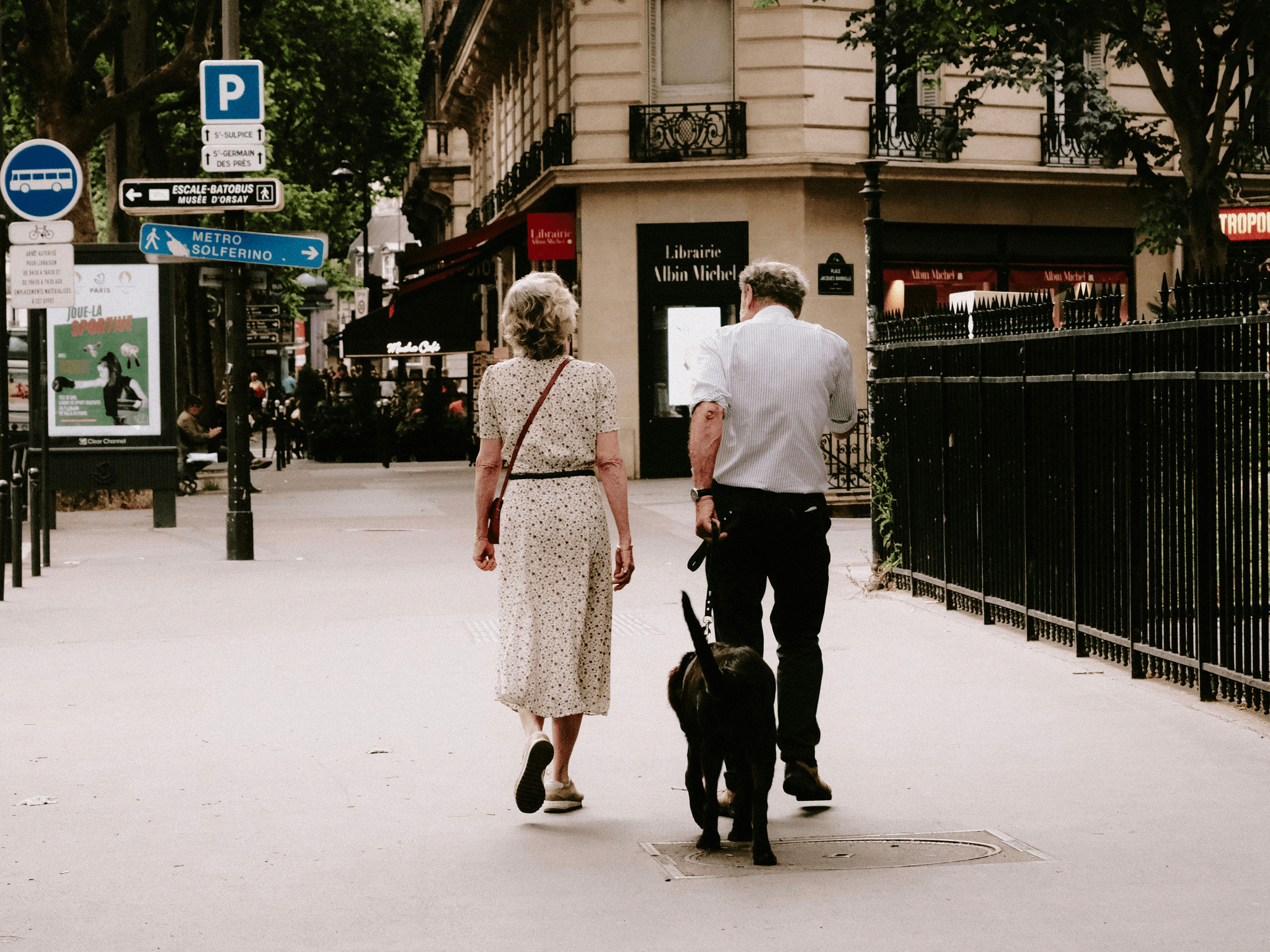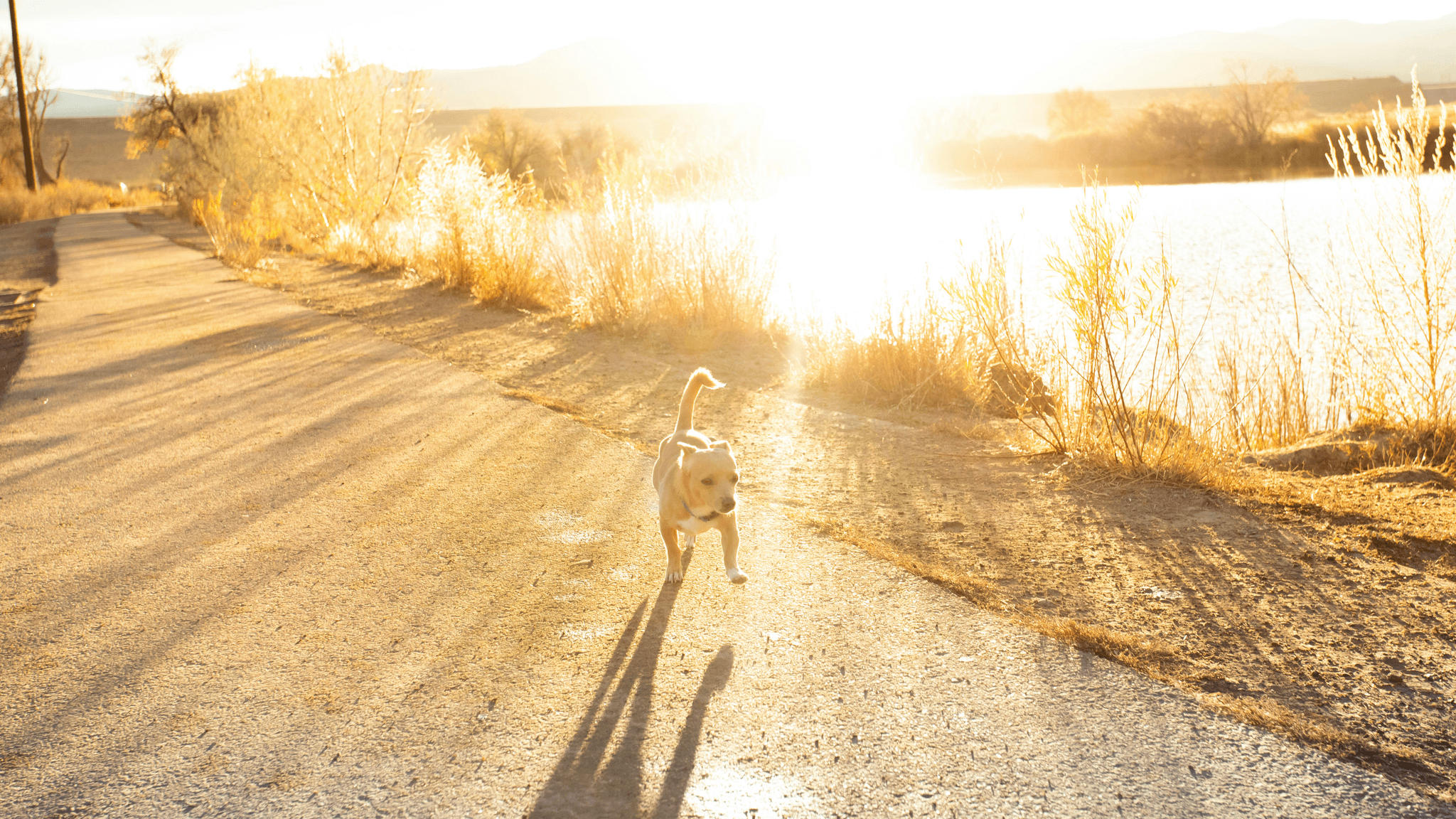Introduction

As our furry companions age, it's crucial to understand the importance of exercise for senior dogs. Just like humans, aging dogs require regular physical activity to maintain their health and mobility. However, there are common concerns about how much exercise a senior dog needs, and it's essential to tailor their routines to meet their individual needs. By incorporating best practices for exercising senior dogs, we can ensure that our aging companions stay happy and healthy well into their golden years.
Importance of Exercise for Senior Dogs
Regular exercise is vital for senior dogs as it helps to maintain muscle strength, joint flexibility, and overall cardiovascular health. It also plays a crucial role in managing weight and preventing obesity-related health issues that can arise in older dogs.
Understanding the Needs of Aging Dogs
As dogs age, their exercise requirements change due to factors such as breed, size, and any existing health conditions. It's important to recognize these changes and adjust their exercise routines accordingly to ensure they stay active without overexerting themselves.
Common Concerns about Senior Dog Exercise
One common concern is knowing how far you should walk a 10-year-old dog or if you can over-exercise an old dog without causing harm. These concerns highlight the need for tailored exercise plans that address the unique needs of aging dogs.
Benefits of Regular Physical Activity
The benefits of regular physical activity for senior dogs include improved mobility, reduced risk of chronic diseases such as arthritis and diabetes, enhanced mental stimulation, and a greater overall quality of life.
Best Practices for Exercising Senior Dogs
Incorporating low-impact exercises, proper warm-up and cool-down techniques, monitoring signs of overexertion, and providing mental stimulation through playtime are all essential best practices when exercising senior dogs.
How Much Exercise Does a Senior Dog Need?

When considering how much exercise a senior dog needs, it's important to take various factors into account. These factors include the dog's breed, size, overall health, and any existing medical conditions. Each dog is unique, so it's crucial to tailor their exercise routine to their individual needs.
Factors to Consider
Factors such as breed and size play a significant role in determining the appropriate amount of exercise for a senior dog. Larger breeds may require shorter, more frequent walks, while smaller breeds may benefit from longer but less frequent walks. Additionally, a dog's overall health and any pre-existing medical conditions should be carefully considered when planning their exercise routine.
Tailoring Exercise to Individual Dogs
Tailoring exercise to individual dogs involves taking into consideration their specific needs and abilities. Some senior dogs may have joint issues or arthritis, which may require low-impact exercises such as swimming or gentle walks. Others may still have plenty of energy and benefit from more vigorous activities like playing fetch or agility exercises.
Recognizing Signs of Overexertion
It's crucial for pet owners to recognize signs of overexertion in their senior dogs during exercise. These signs can include excessive panting, reluctance to continue walking or playing, limping, or stiffness after physical activity. If any of these signs are observed, it's essential to allow the dog time to rest and consult with a veterinarian if necessary.
By carefully considering these factors and tailoring an exercise routine suited to the individual needs of each senior dog, pet owners can ensure that their furry companions stay healthy and happy in their golden years!
How Far Should You Walk a 10 Year Old Dog?

As our furry friends age, it's important to adjust their exercise routines to accommodate their changing needs. While a 10-year-old dog may still enjoy regular walks, it's crucial to pay attention to their energy levels and physical condition. Some older dogs may need shorter, more frequent walks to prevent overexertion and joint pain.
Adjusting Exercise Routines for Aging Dogs
When it comes to adjusting exercise routines for aging dogs, it's essential to consider factors such as breed, size, and overall health. For some senior dogs, low-impact activities like swimming or gentle playtime may be more suitable than long walks or high-intensity workouts. Consulting with a veterinarian can help tailor an exercise plan that meets your dog's specific needs.
Monitoring Your Senior Dog's Fitness Level
Monitoring your senior dog's fitness level is vital in ensuring they get the right amount of exercise. Keep an eye out for signs of fatigue, excessive panting, or reluctance to continue walking during outings. Regular check-ups with the vet can also help track your dog's weight and overall physical condition.
Proper Warm-up and Cool-down Techniques
Just like humans, senior dogs benefit from proper warm-up and cool-down techniques before and after exercise. Gentle stretching exercises can help improve flexibility and reduce the risk of injury during physical activity. Additionally, allowing your senior dog time to rest and recover after exercise is crucial for maintaining their overall well-being.
Can You Over Exercise an Old Dog?

As our furry friends age, it's crucial to be mindful of their exercise routine. Over-exercising elderly dogs can lead to joint pain, muscle strain, and fatigue. It's important to tailor their physical activity to their individual needs and capabilities.
Risks of Over-exercising Elderly Dogs
Pushing an old dog too hard can lead to serious health issues such as arthritis and ligament injuries. It's essential to recognize signs of overexertion, such as excessive panting, reluctance to move, or limping. Low-impact exercise options like swimming or gentle walks can help prevent these risks.
Low-impact Exercise Options
Low-impact exercises are perfect for senior dogs as they provide a good workout without putting too much stress on their bodies. Swimming is an excellent low-impact option that provides cardiovascular benefits without impacting the joints. Another great option is slow-paced walks on soft surfaces like grass or sand.
Balancing Rest and Activity
Finding the right balance between rest and activity is key for older dogs. They may need more frequent breaks during exercise or shorter sessions overall. It's important to monitor their energy levels and adjust their routine accordingly to ensure they get enough exercise without overdoing it.
Remember that our aging canine companions still need regular physical activity for their overall well-being, but it's crucial to approach it with care and consideration for their age and health condition.
Should I Walk a 13 Year Old Dog?

When it comes to exercising a 13-year-old dog, it's crucial to consider age-appropriate guidelines. While they may not have the same energy levels as younger dogs, they still benefit from regular physical activity. Short, gentle walks and light play sessions are ideal to keep them moving without overexertion.
Age-Appropriate Exercise Guidelines
For a 13-year-old dog, aim for short walks of about 10-15 minutes a few times a day, rather than one long walk. This helps prevent strain on their joints and muscles while still allowing them to stretch their legs and get some fresh air. Additionally, low-impact activities like swimming or gentle fetch can provide exercise without putting too much stress on their aging bodies.
Mental Stimulation for Senior Dogs
In addition to physical exercise, mental stimulation is essential for senior dogs. Engage them with interactive toys, puzzle feeders, or training games to keep their minds sharp and alert. This can help stave off cognitive decline and provide a sense of purpose for your aging companion.
Importance of Playtime and Social Interaction
Playtime and social interaction are just as important for senior dogs as they are for younger ones. Encourage gentle play with other friendly dogs or interactive play sessions with you to keep them socially engaged and happy. This can also help prevent loneliness and depression in older dogs.
What is the Best Exercise for Older Dogs?

Aerobic vs Anaerobic Exercise for Senior Dogs
When considering the best exercise for older dogs, it's important to understand the difference between aerobic and anaerobic exercise. Aerobic activities, such as walking and swimming, are great for improving cardiovascular health and stamina in senior dogs. On the other hand, anaerobic exercises like strength training and agility drills can help maintain muscle mass and joint flexibility as they age. By incorporating a balance of both types of exercises into your senior dog's routine, you can help them stay fit and healthy in their golden years.
Incorporating Strength Training and Flexibility
As dogs age, their muscles tend to weaken, and their joints become less flexible. To combat this natural decline, it's essential to incorporate strength training and flexibility exercises into their routine. Simple activities like gentle resistance training using a harness or stretching exercises can help maintain muscle tone and joint mobility in senior dogs. Additionally, incorporating balance exercises can help prevent falls and injuries as they age.
Fun and Engaging Exercise Ideas for Aging Dogs
Keeping older dogs engaged in their exercise routine is crucial for maintaining their physical and mental well-being. Engage your senior dog with mentally stimulating activities like puzzle toys or hide-and-seek games to keep their minds sharp. Additionally, consider incorporating interactive toys or talking buttons that allow your dog to communicate with you through simple commands or requests. These engaging activities not only provide physical exercise but also promote mental stimulation for aging dogs.
Remember that every senior dog is unique, so it's essential to tailor their exercise routine to meet their individual needs while keeping safety in mind. By incorporating a mix of aerobic and anaerobic exercises while focusing on strength training, flexibility, and engaging activities, you can ensure that your aging companion enjoys a happy and healthy life.
Conclusion

Senior dog care is crucial in promoting longevity and overall well-being. By understanding how much exercise a senior dog needs, tailoring their routines, and providing age-appropriate activities, we can ensure they lead a happy and healthy life.
Promoting Longevity through Senior Dog Care
Understanding the exercise needs of senior dogs is essential in promoting their longevity. By recognizing the signs of overexertion and adjusting their routines accordingly, we can help them stay active while minimizing the risk of injury or strain.
Finding the Right Exercise Routine for Your Senior Dog
Finding the right exercise routine for your senior dog involves considering factors such as breed, size, and overall health. Tailoring their exercise to individual needs will help maintain their fitness level and ensure they remain active without overexerting themselves.
Ensuring a Happy and Healthy Life for Your Aging Companion
Ultimately, ensuring a happy and healthy life for your aging companion involves more than just physical exercise. Mental stimulation, playtime, social interaction, and age-appropriate activities all contribute to their overall well-being and quality of life.
Remember that as our furry friends age, it's important to adapt their exercise routines to meet their changing needs. By doing so, we can ensure they continue to enjoy an active lifestyle while staying safe and healthy.
